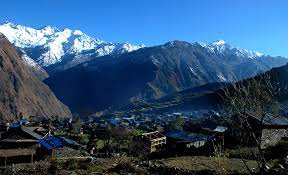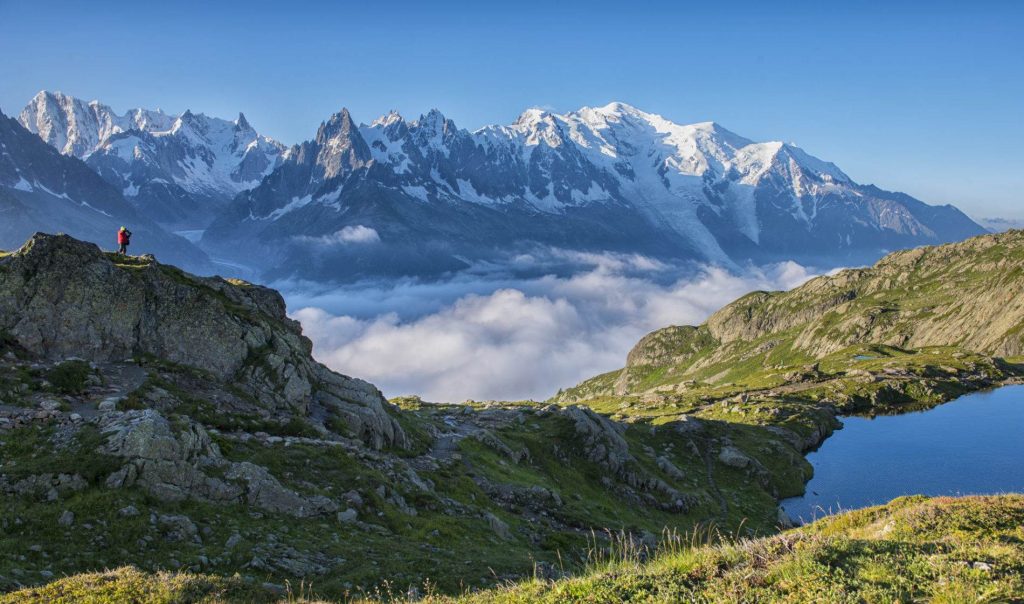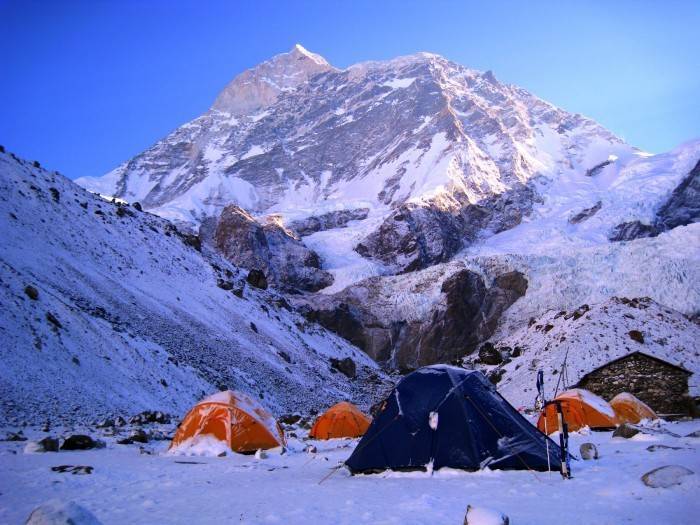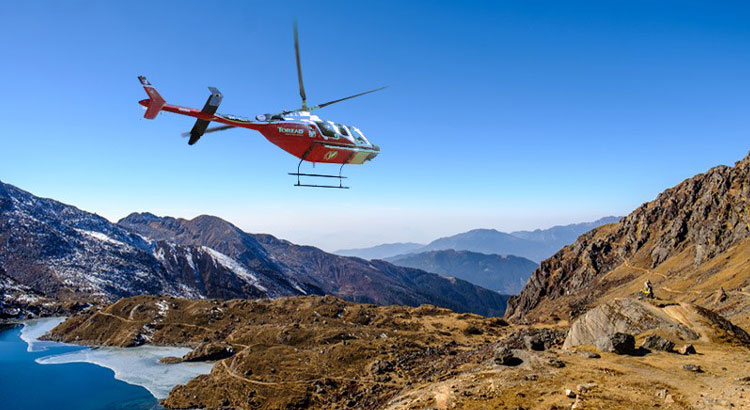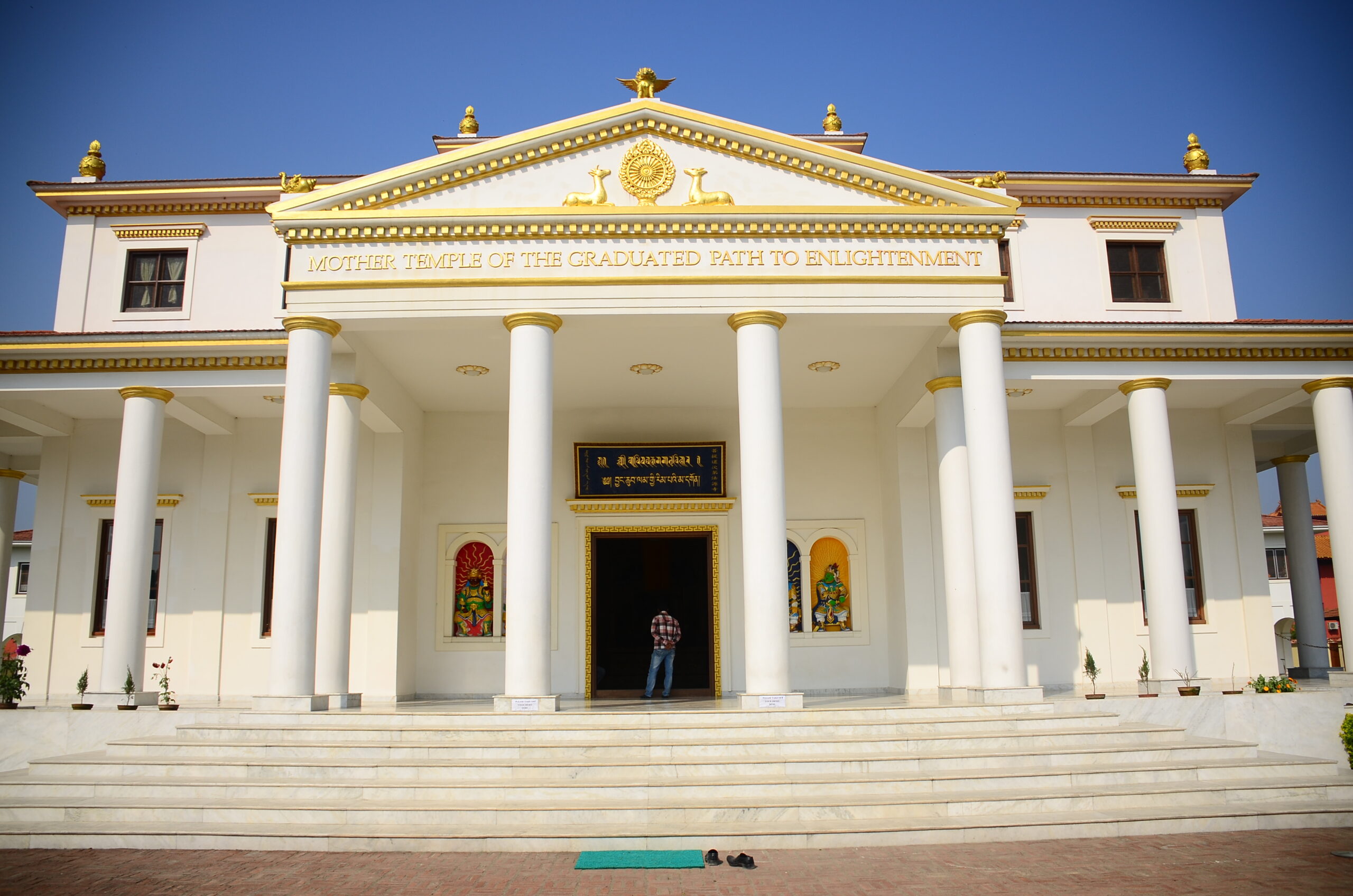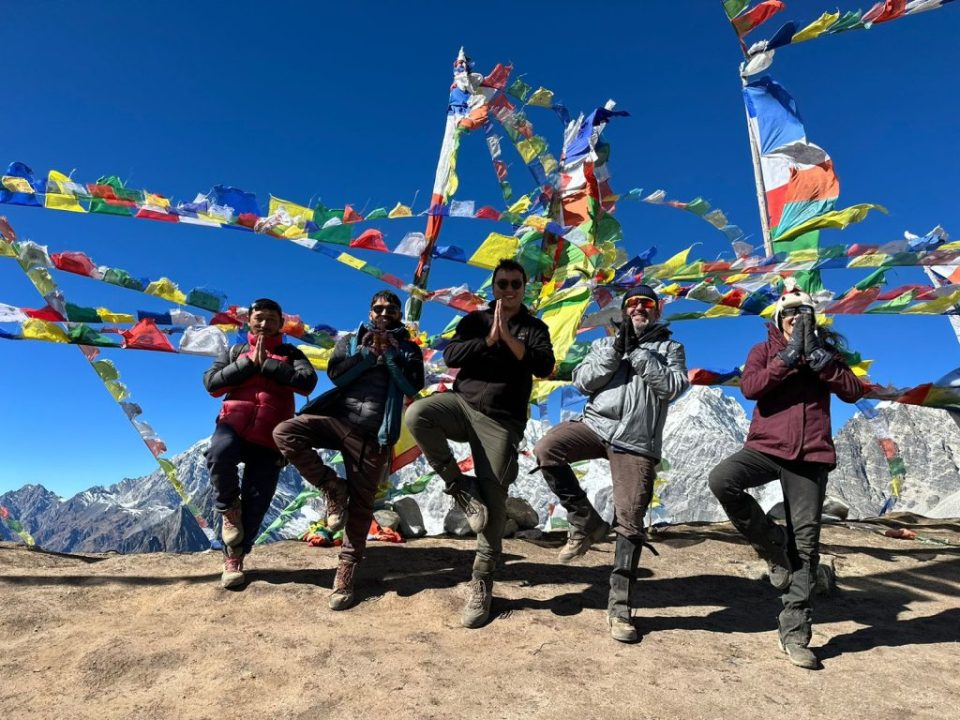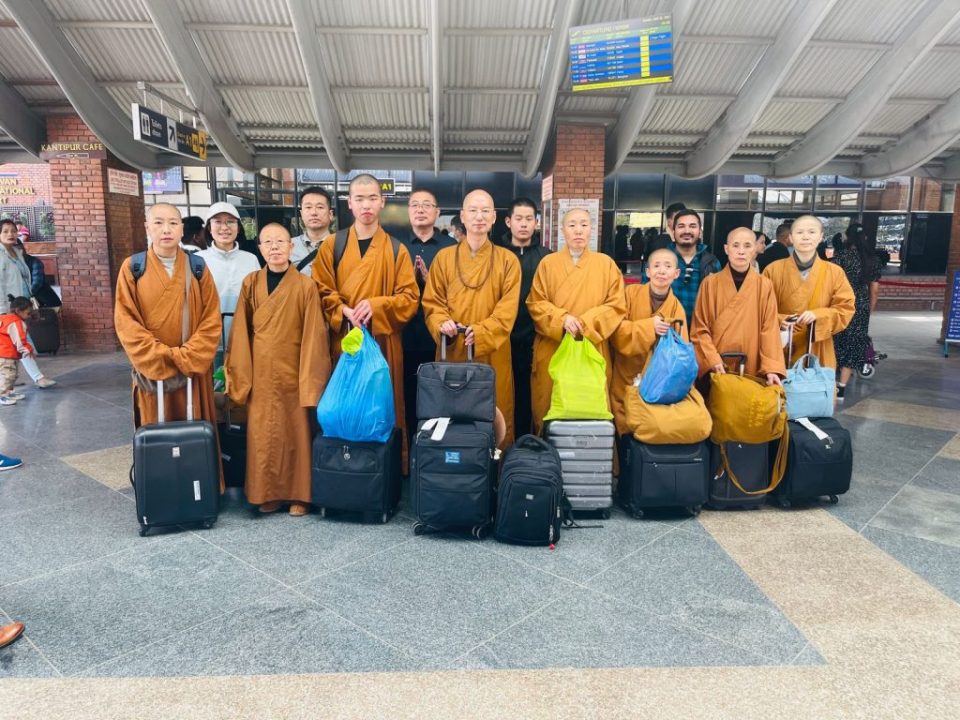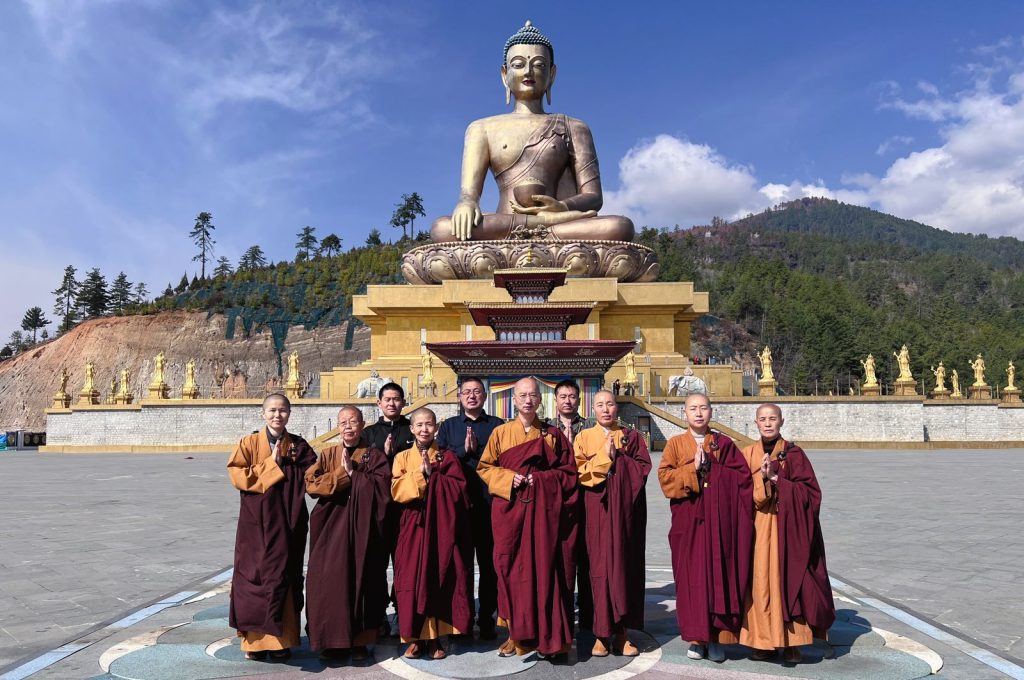Ruby Valley Trek
Trip Introduction
The Ruby Valley Trek is a multi-culture and unexplored trek. The valley is rich in rubies so it was named after the gem- Ruby. It is located in Nepal’s central eastern region. It is located 70 kilometers north of Kathmandu. It is tucked away between Langtang National Park and the Manaslu Conservation Area. This trek is rich in flora and fauna. Throughout the trek, the Ganesh Himal Range, Langtang Himal, Lamjung Himal, and Manaslu can be seen.
The trail passes through Langtang National Park, a stunning landscape filled with majestic flora and fauna, as well as yak pasture land. There are numerous plant and animal species to see, such as the Himalayan Thar, Gaur, Musk deer, Monkeys, and so on. You’ll be walking through forests of Spanish oak, blue pine, and different Rhododendron species. You will also visit several Brahmins, Chhetri, Gurung and Tamang villages and learn about their way of life and culture.
A seven- to eight-hour drive from Kathmandu to Syabrubesi starts off the 5-day trek. After that we’ll travel to the gorgeous Tamang village, where we’ll learn about their culture and walk-through dense forest and a suspension bridge. We’ll climb up to Parvati Kunda, the sacred lake, after arriving in Gatlang. We’ll pass through a Rhododendron Forest on our way to Somdang, where you’ll see zinc, copper, crystal, and ruby mines. To go to Tipling, we’ll also have to cross the Pangsang pass. We’ll pass through a number of villages, including Tipling, Chalish and the ending point of our trek Borang.
Itinerary
Departure from : Kathmandu, Nepal
Arrival On : Kathmandu, Nepal
Day 1
Arrival at TIA Kathmandu
| Days | Activities | Durations |
| 1. | Arrival at TIA Kathmandu (1,400m/4,592ft) | |
| 2. | Drive from Kathmandu to Syabrubesi (1,500m/4,921ft) | 7-8hrs |
| 3. | Trek from Syabrubesi to Gatlang (2,337m/7,690ft) | 5-6hrs |
| 4. | Trek from Gatlang to Somdang (3,271m/10,760ft) | 6-7hrs |
| 5. | Trek from Somdang to Tipling (2,078m/6,835ft) | 6-7hrs |
| 6. | Trek from Tipling to Chalish (1,875m/6,188ft) | 2-3hrs |
| 7. | Trek from Chalish to Borang (1,700m/2,296ft) and Drive to Dhading Besi (580m/1,902ft) | 7-8hrs |
| 8. | Drive back to Kathmandu | |
| 9. | Departure |
Upon arrival at Tribhuvan International Airport (TIA). Our agent will greet you and accompany you to the hotel. Drive to the hotel and check-in. Our guide will come to see you in the evening and give you a brief overview of the journey. At the hotel, we had dinner and stayed the night.
Day 2
Drive from Kathmandu to Syabrubesi
This morning, after you’ve finished your breakfast at the hotel. We will depart for Syabrubesi, a 7 to 8-hour drive away. We’ll be driving through traditional terraced fields and along the mountainside. We will pass through Trishuli, a busy settlement. The path takes you through Naubise – Galchi – Dunche and finally Syabrubesi. Dinner and Overnight at the Hotel.
Day 3
Trek from Syabrubesi to Gatlang
Today is the first day of our trek, and we will depart for Gatlang after breakfast. We’ll be walking for 5 to 6 hours. To get to Gatlang village, we’ll travel through Yak pastures, lush forests, and waterfalls. We will first cross the Bahun Danda Pass, which will require us to take a narrow and rough path. On the way, we’ll stop for lunch. We will pass through beautiful villages on our way to the small Tamang village of Gatlang. Dinner and Overnight at the Teahouse.
Day 4
Trek from Gatlang to Somdang
We’ll leave for Somdang after breakfast. We’ll be walking for 6 to 7 hours. We’ll make our way to the holy lake of Parvati Kunda. We’ll continue our walk after we’ve explored the area around the lake. To get to Yuri Kharka, we’ll climb a hill and pass through a Rhododendron and Pine Forest. We’ll stop for lunch on the way. Following that, we will walk toward the Somdang River via Khurphu Bhanjyang. After a few hours of walking, we arrive in Somdang, where there is a deep tunnel which used to extract mines such as zinc, copper, ruby, crystal, and tin. It has been closed for many years, but you can still explore the area. Dinner and Overnight at the Teahouse.
Day 5
Trek from Somdang to Tipling
We’ll leave for the Tipling after breakfast. We’ll be walking for 6 to 7 hours. Throughout the trek, we will be treated to breathtaking views of the mountains. From there, we’ll make our way to Pangsang La Pass. On the way, we’ll stop for lunch. We’ll be walking through a dense forest of pine and rhododendron. The trail descends to Marmailung and then continues to Tipling village, which has Buddhist Gombas as well as a Catholic Church. Dinner and Overnight at the Teahouse.
Day 6
Trek from Tipling to Chalish
We’ll leave for Chalish after breakfast. We’ll be walking for about 2 to 3 hours. We’ll only be traveling a short distance today. We’ll descend into a peaceful forest and cross streams to get to Chalish village. We will eat lunch and then relax for a while before exploring the surrounding area and experiencing Gurung, Dalit, and Tamang culture. Dinner and Overnight at the Teahouse.
Day 7
Trek from Chalish to Borang and Drive to Dhading Besi
We’ll leave for Borang after breakfast. We’ll be walking for about 2 to 3 hours. As this is the final day of your journey, we will take in the breathtaking scenery along the way. We will walk to Borang village for lunch and then descend to Lishne Khola, where our jeep will be waiting for us. From there, we’ll be on the road for 4 to 5 hours. To get to Dhading Besi, we’ll go through Ankhu Khola and Kimgdang Phedi. Dinner and Overnight at the Teahouse.
Day 8
Drive back to Kathmandu
We’ll leave for Kathmandu after breakfast today. The 4 to 5hour drive. We’ll be driving through traditional terraced fields and along the mountainside. We’ll stop for lunch on the way. You will be driven to the hotel, where our representative will assist you with the check-in process. Dinner and Overnight at the Hotel.
Day 9
Departure
The 8-day journey has concluded Today is your last day in Kathmandu. Our representative will have a short discussion on the trip and take your feedback after a hearty breakfast. Following this session, he will drive you to the airport in our private transportation 3 hours before your trip.
Tailor Your Holiday
Lorem ipsum dolor sit amet, consectetur adipisicing elit, sed do eiusmod tempor incididunt ut labore et dolore magna aliqua. Ut enim ad minim veniam, quis nostrud
Route Map
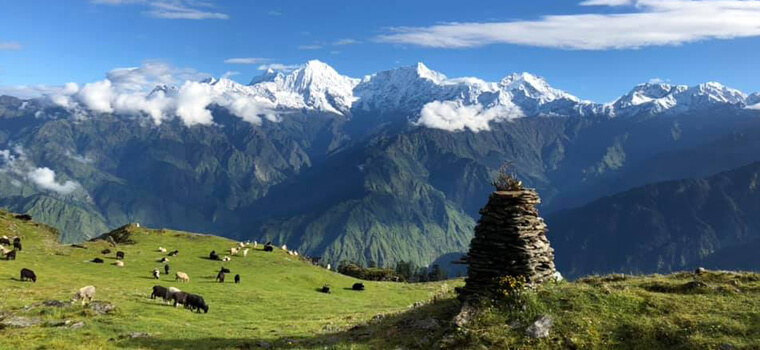
Altitude Map

What's Included
- Arrival & Departure: Airport – Hotel transfer – Airport (Pick Up and Drop on private basis).
- Hotel Accommodation in Kathmandu: 3nights at Star categories hotel on twin sharing and BB basis.
- Welcome Dinner and farewell dinner at Nepali culture restaurant in Kathmandu with Office’s Staff.
- Food & Lodging: 3 meals a day (Breakfast, Lunch, Dinner) along with accessible accommodation sharing during the trek.
- Permit: All necessary paper works: Langtang National Park permits and TIMS Card.
- All government and local taxes if necessary.
- Trekking Map: Ruby valley Trekking map.
- Member transportation: – Road Transportation: Drive from Kathmandu to Sybrubeshi and Dhading Besi to Kathmandu.
- Drinking: 2 liters of boiled water to carry on thermos per day per member.
- Guide: Government licensed Guide (English speaking) during the trek
- Porter: Porters (2 trekkers: 1 porter) up to 15kg during the trek.
- Insurance: Insurance for all involved Nepalese staff during the trek.
- Comprehensive Medical kit.
What's Not Included
- Air Fare: International flight airfare (from and to Kathmandu).
- Nepal Tourist Visa fee.
- Extra night in Kathmandu: Extra nights’ accommodation in Kathmandu. In case of early arrival or late departure, early return from Trekking (due to any reason) than the scheduled itinerary.
- Personal Insurance: Travel and high altitude insurance, accident, Helicopter medical & emergency evacuation. *Mandatory
- Personal Expenses: Telephone calls, Internet, Toiletries, battery recharge, hot shower, laundry, soft drinks, beer, and any alcoholic beverages.
- Personal Equipment: Clothing, Packing Items or Bags, Personal Medical Kit, Personal Trekking equipment.
- Rescue Evacuation: Medical and emergency rescue evacuation cost if required. (Rescue, Repatriation, Helicopter, Medication, Medical Tests and Hospitalization costs).
Equipment List
What to bring ?
General
Tailor Your Holiday
Everyone has their own preferences in terms of destination, journey time, and budget. As a result, sticking to our plan isn't necessary. We will create a personalized itinerary for you that includes accommodations, transportation, meals, and tour guides. We guarantee you the best Tailor-made Package because this is your trip. You have the option to personalize it, as your liking. Let us Plan together to make your Vacation worth it.
Fixed Departure
Why Travel With Us?
Secure Online Payment, No Credit Card Fee
Travel with Locals. Support Locals
Lifetime Deposit
Private & Tailor-Made Trips
24/7 International Support
Support Local Communities & Donate to Charity
All Inclusive Price
Secure Online Payment, No Credit Card Fee
Trip Facts
| Country | Nepal |
| Duration | 20 Days |
| Maximum Altitude | 3,842m/12,640ft |
| Region | Ganesh Himal |
| Meals | Breakfast, Lunch, Dinner |
| Accommodation | Hotel, Lodge, Teahouses |
| Grade | Moderate |
| Best season | Mar, Apr, May, Sep, Oct, Nov |
Trip Highlights
- Enjoy the panoramic view of Ganesh Himal Range, Langtang Himal, Lamjung Himal, and Manaslu.
- Explore the Tamang, Gurung, Brahmin, and Chhetri villages and also learn about the Buddhism -Bon Po culture.
- Walk across the Langtang National Park and witness rare animals like Himalayan Thar, Gaur, Musk deer, Monkeys, and Langur.
- Pass through beautiful forests, alpine meadows, and yak pastures.
- Explore the Zinc, Ruby, and Copper mines
Is this trek appropriate for you?
- The Ganesh Himal Trek is the Moderate Trek. You can easily complete this trek if you are physically and mentally prepared and willing to do so.
- You will be Trekking for 5 Days. The Path can be completed in as little as 2 hours as much as 7 hours.
- The walk is not tricky, there is no Climbing or Scrambling but the path is rocky and hilly.
- Each day you will cover 200 to 400 meters in height while trekking. The highest point in the trek you will reach on the trek is 3,842m.
- The weather and Remoteness of this trek, as well as dealing with the high altitude, require a slow pace and the need to stay hydrated.
The ideal season to travel
Spring
March: The month of March is ideal for trekking and admiring the spectacular mountain peaks. The Ruby valley trekking trail will be crowded with hikers beginning in March. In the Ruby valley region, the spring season begins in March, the month of the Rhododendron. Trekking in March will provide you with the most memorable experiences in a pleasant and mild climate. At lower altitudes, the weather is not particularly hot, and at higher altitudes, it is not particularly cold. The views of the mountains are spectacular, and the trail is excellent. Nature can be experienced at its most beautiful.
April: April is the beginning of spring in Nepal, and the weather is ideal for trekking to the Ruby valley Region. The views are bright and clear at this time of year, and everyone enjoys spring. The surroundings are vibrant and colorful, with rhododendrons in bloom. It is the best time of year to see various bird and butterfly species. During your April trip to Ruby valley, the weather is completely in your favor. The moderate heat of the sun, combined with the lack of wind, makes it ideal for trekking. Furthermore, the amount of rain and snow is insignificant.
May: May, the final month of the spring season in Nepal, is much hotter. The Ruby valley Region trek in May has the highest temperature of the year. Temperature and weather will vary depending on the altitude throughout the trek. During the day, the weather in the lower sections will be extremely hot. The nights, on the other hand, are tolerable.
Summer
June: June is the coldest time of the summer and has the least amount of rainfall. The month of June is the offseason and therefore less popular for trekking. In the region, June marks the start of the wet monsoon season. The weather is slightly humid, and you can enjoy nature while it is wet and cool. If you enjoy the rain, rainbows, and less crowded trails, this is the month for you. During this month, the air begins to become humid due to continuous rain.
July: Trekking in Nepal in July isn’t always joyful because the heavy rains can block your view of the beautiful mountains you’ll pass through. In July, you will notice that the temperature is not as chilly in the Ruby valley Region. As the rain washes away the dust and pollution, the environment opens up and becomes very fresh, and you will be able to enjoy nature despite the chilly weather.
August: In the Ruby valley region, August is the off-season for trekking. In August, the monsoon season produces strong rains, especially in lower places. Due to weather-related concerns, most hikers avoid this month. The summer monsoon season comes to an end in August. It rains regularly, and you may feel a little chilly as a result. You should also be cautious because the trails are slippery and the possibility of landslides and avalanches is considerable.
Autumn
September: The monsoon season finishes in September, marking the start of the fall season. The optimum time to trek to Ruby valley Trek is in September. The weather and temperature for the Ruby Valley Trek are ideal. The temperature is pleasant during the day, but it is extremely chilly at night.
October: October is the month that falls between September and November. As a result, it keeps both monsoon rain and winter’s biting cold at distance. The weather is warm and pleasant in October, with clear skies and fresh air. The nights, on the other hand, are a little chilly, with a brisk breeze coming from the campsite. Throughout the month of October, the weather is pleasant, allowing people to enjoy an unobstructed view of the snow-capped peaks. They can also visit bright valleys and interesting scenery of various colors.
November: The last declared peak season for trekking in Nepal is November. Bright, sunny days and beautiful skies characterize November. On the treks, these provide breathtaking, crystal-clear vistas of the mountains. The days are bright and sunny in November. The sky is clear, with perhaps a few stray clouds possible.
Winter
December: In the Ruby valley region, December is a rather dry month. It receives fewer than 25 millimeters of rain every year. The Ruby valley region is in the shadow of the Himalayas. As a result, December has a lower chance of rain. It is also possible to walk the Ruby valley Trek in December. In December, hikers will get a unique perspective of the region.
January: In Nepal, January is in the midst of winter. The higher elevation receives moderate snowfall, whereas the lower elevation is ideal for trekking. During the day, you will feel warm, but as night falls, you will feel cold. In January, these areas receive little to no rainfall. As a result, the skies remain clear and the surroundings appear even sharper. The trails will be covered in snow, so you may need crampons to cross the pass.
February: The Ruby valley Region trek in February is an escape from the hustle and bustle of everyday life to a place where all you can see are mountains and scenery. It’s peaceful because February is the coldest month of the year. Most people dislike trekking in the winter because they believe it is extremely difficult.
Drive to Syabrubesi
- The Distance between Kathmandu and Syabrubesi is 122 km.
- Traveling to Syabrubesi by jeep will take around 7-8 hours.
- The route to Syabrubesi from Kathmandu is Naubise – Galchi – Dunche and Lastly Syabrubesi.
Altitude sickness
Beyond 2,500m (8,000ft), Altitude sickness is a sneaky monster that may attack even the fittest trekkers. These demands do everything in your power to prepare for altitude trekking and take things carefully throughout your Ruby valley journey. With increasing altitude, the amount of available oxygen decreases, which is the primary cause of high-altitude sickness.
So, you may suffer from different altitude sicknesses at an altitude of 3,842m.
i.e., Acute Mountain sickness (AMS), High pulmonary edema (HAPE), High-altitude cerebral edema.
Your body requires time to adjust to thin air, so start at a lower altitude and work your way up. Some of the symptoms of Altitude sickness are:
- Increased breathing.
- Increased urination.
- Restless sleep.
- Periodic breathing at night because of altitude.
- Dehydration.
- Shortness of breath.
- Extreme fatigue.
- Respiratory failure.
- Cerebral edema.
- Coma.
Certain care should be made to ensure that the situation does not worsen. However, if the symptoms worsen, you may need to return to a lower height and seek medical help. There are, however, several other precautions you may take while trekking to Ruby valley to lessen your risk of altitude sickness.
- Trekkers can modify their bodies by slowly and gradually climbing, as our bodies require time to adjust to the oxygen level. For high altitude trekking, at least one day of acclimatization rest is essential, and you should ascend as high as possible before returning to a lower altitude for the night.
- You should do various strength training exercises such as running, cycling, jogging, push-ups, and going to the gym to acquire strength and stamina for your adventure.
- As the air gets increasingly thin, an increase in elevation reduces oxygen levels, and in the Ganesh Himal Region trek, an increase in altitude also means less vegetation. The consumption of alcoholic beverages, cigarettes, and tobacco decreases the body’s water content.
- The greatest remedy is to always stay hydrated. On your walk, instead of drinking cooled water, drink warm water.
- Diamox is the most effective altitude sickness medication; thus, you should bring a subscription with you on the trek. However, you should consult with your physician to see whether it is advantageous.
Things to know before traveling to Ruby valley.
Drinking-Water.
Trekkers must hydrate their bodies at a higher altitude than in lower elevations to avoid dehydration and altitude sickness. Lack of fluid can be the main hindrance during the trek. You should hydrate your body with at least 3-4 liters of water dialysis you arrivewith (Tea, soup, or normal drinking water).
There is no difficulty to find water in the trek to Ruby valley. Tap water, River water is mostly available throughout the trek but is not safe to drink. You are not used to the local water, so drinking it may result in Diarrhoea. So, unless there is an emergency, not drink stream water without boiling or treating it with purifying tablets or a water filter (Steripen).
Besides that, the other places to get drinking water are local teahouses and lodges, so whenever you get to any teahouses/lodges on the trail grab the opportunity to refill your water bottle and treat it before drinking. The teahouse also provides boiled drinking water. Coldwater is provided free of charge, but for boiled water, you have to pay a certain amount. For bottled water, as you get higher the cost will get expensive. It will cost you up to 1$-1.5$ per bottle/liter.
Every day, carry enough water for the day before beginning the trek because in case you won’t find any water resources on the trail it will be problematic. We recommend you bring a Reusable water bottle of 2-2.5ltr or a water pouch favorable for both hot and cold water.
Here are some ways that you can use to make the water drinkable.
- Boiled water
Boiling water is the best way to purify the water. As we are climbing to a higher altitude you need to boil the water for about 3-minute and season it with a pinch of salt before drinking. You can get free tap water in the teahouse/guesthouses but for boiled water, it cost a certain amount.
- Purification tablets or electrolyte powder.
Purification tablets like chlorine or iodine tablets are commonly used tablets by trekkers to disinfect the water. 1 tablet is enough for a liter of water. It takes around 30 min for the tablets to dissolve and become drinkable. Water, purify by tablets may leave a taste in your mouth.
Electrolyte powder is another option. Electrolyte powder is a better way to purify water than tablets because electrolyte powder contains minerals such as salt, Potassium, Magnesium, which are important for your body during the trek.
- UV Light water purifier/ SteriPEN.
It is a simple, effective, economic, and environment-friendly way to purify water. It kills the bacteria and virus within 10 sec by exposing them to ultraviolet light using SteriPEN, without changing the flavor of the water. This is a highly recommended means of purifying water (a one-time investment).
Electricity and Internet facility at Ruby Valley Trek.
Electricity facility.
You won’t be in darkness during the trek to Ruby valley. The whole region is either powered by Hydroelectricity or a Solar panel/ battery.
Most of the area is powered by local hydroelectricity so there will be a charging socket in your hotel/lodge’s rooms. However, the village in some upper areas relies on Solar panels or solar power batteries for electricity that is enough to light the bulbs and charge small devices. In those places, there will be no charging socket in your room. There is a commonplace for charging usually in the dining area. You might be able to charge the mobile set, camera battery, and power bank from thereby paying a price. Solar battery power might harm your device, so charge it at your own risk. As a result, it is recommended that you bring a power bank and spare camera batteries that will last the duration of your trek.
Internet Facility and Network Service
This region does have Wi-Fi/internet access, but it lacks a stable connection as you climb to higher altitudes. Most of the lodge/ teahouses have Wi-Fi availability. Some provide it free of charge and some charge an amount. However, you can also connect to the internet via. Your cellular network’s data package.
Both NTC and NCell cellular network is available in this region but at higher altitude, some places may be out of reach of any mobile network. So, during that time you will be disconnected from your loved ones. However, you will be connected to a mobile network most of the time. NTC cellular service is most preferred over NCell because NTC provides better service and signal connectivity, comparison to NCell.
Buy the sim card from the stores in Kathmandu for 1USD. By taking data packages you can use the internet service t during the trek when the mobile network catches a signal. It is not guaranteed that your mobile network will have a signal all the time. Or buy a satellite phone.
| Buy NTC data package
Dial*1415# |
Cost of data package in NTC:
-14GB=7$ (Valid up to 28days -30GB=15$ (Valid up to 90 days) |
Check balance
Dial *1415# |
| Buy NCell data package
Dial *17123# and select. |
Cost of data package in NCell:
-15GB=10$ -25GB= 12$ (Valid up to 30 days) |
Check balance
Dial*101# |
Document needed to buy a sim card.
For Foreigner = 1 passport size photo, Passport photocopy, or valid identity card.
For Nepali = 1 Passport size Photo, Photocopy of Citizenship.
Some useful tips to reduce the extra usage of electricity.
- Extra batteries for the camera.
- Power bank with 5000-10000mAh.
- The solar charger and solar lamp (LuminAID Nepal lamp)
- As possible less usage of a device with low brightness, GPS off, and airplane mode.
Essential Backpack items for Ruby valley Trek.
The bag of a trekker also reveals the trekker’s level of experience. A good trekker should be a smart backpacker. You should be pre-prepared for the things that you need in the trek.
Here are some of the things that you need to take with you for the trek.
Travel documents
- Airline tickets with the itinerary.
- Travel insurance policy documents.
- Original valid passport.
- Copies of passport.
- Passport-sized photos.
- Nepalese cash.
- Travel permits.
Clothing
- A pair of waterproof trekking shoes or hiking boots.
- A pair of flip flop slippers or running shoes.
- 2-3 Sets of thermals (leggings and tops)
- Pairs of hiking long sleeve shirts or tops.
- Pairs of hiking shorts and pants.
- Fleece jumpers or a set of tracksuits.
- Good quality windproof down jacket.
- Lightweight waterproof rain jacket and pants.
- Neck gaiter, leg warmer, and packet of pocket hand warmers.
- 5-6 pairs of quick-dry socks, underwear, and sports bra.
- Pair of inner and outer gloves.
- Knitted Hat, sun cap, beanie, or bandana.
- Glacier Sunglasses and eyeshade.
Trekking equipment
- Waterproof trekking bag of 40-50liter and Rucksack of duffel bag (if your backpack is not enough for all your item and need a potter).
- Reusable water bottle (both hot and cold) of at least 2-3litre.
- A sleeping bag and sleeping bag liner.
- Trekking stick/ poles.
- Route Map to the ruby valley.
- Crampons (if you are trekking in the winter season, Dec-Feb).
- LED Headtorch or solar lamp (LuminAID Nepal lamp is best as it solar-charged and very much portable)
- Stuff sacks, paper bags.
- Plug adapter, Charging appliances, Power bank, Camera batteries.
- Pocket knife.
- Travel Wallet.
Toiletries
- Rolls of Toilet paper, wet wipes, and tissue.
- Medium-sized quick-drying towel.
- Toothbrush and toothpaste.
- Hand sanitizer.
- Sunscreen, lip balm, body lotions.
- Deodorants.
- Portable mirror.
- Shampoo and soap.
Personal First Aid Kit
- Antibiotics
- Painkillers, Paracetamol, ibuprofen, aspirin, Nicole
- Sanitary pads
- Bandage.
- Anti-inflammatory spray.
- Anti-Nausea tablets.
- Anti-diarrhea pills or power.
- Altitude sickness tablets- Diamox
- Water purifying tablets or electrolyte powder.
- Mosquito and Insect Repellent.
- Salt or anti-leech oil (If traveling in the rainy season, July- Aug)
- Earplugs
You can buy or hire trekking clothes and equipment in Thamel, Kathmandu. If you are buying it, you have to allow an extra day for shopping; however, if you are hiring it, you must inform us in advance so that we can arrange it before your arrival in Kathmandu. This way you can reduce the weight of your luggage and save time and money.
Branded, New as well as fake, and used trekking clothes and equipment are available around the Thamel area at a reasonable price.
Accommodation, Meal, and Transportation
Accommodation
We will accommodate in star hotel during our stay in Kathmandu.
During the trek, we will accommodate in hotel/lodges.
Meal
During the trek, we will provide you three-time meals. You can choose from the given menu.
Breakfast– French toast, Pancakes, Bread butter, Tibetan bread/ Chapati, Boiled Egg, Omelets, Tsampa porridge, Oatmeal, Tea/ Coffee, etc.
Lunch– Dal Bhaat set (Rice, Vegetable curry/ Meat curry, Lentils, Pickle, Salad, Papad), Fried rice, Chowmein, Thukpa-Tibetan Noodle soup, Garlic soup, Noodles soup, Mo; Mo (dumplings), Potato items, Macaroni, Sandwiches, Tenduk, etc.
Dinner– Dal Bhaat set (Rice, Vegetable curry/ Meat curry, Lentils, Pickle, Salad, Papad), Fried rice, Chowmein, Thukpa-Tibetan Noodle soup, Garlic soup, Noodles soup, Mo; Mo (dumplings), Potato items, Macaroni, Sandwiches, Tenduk, etc.
Besides these, there are a variety of other options of food. You can buy from your own pocket.
Transportation
By Bus- from Kathmandu airport to hotel and vice-versa.
From Kathmandu to Sybrubeshi.
From Dhading Besi to Kathmandu.
Guide and Staff Arrangements
Throughout the trek, all your activities will be handled by our well-qualified and professional staff. They will do all the escorting. As this is one of the tricky treks, we are providing you a highly experienced and licensed guide with fluent English speaking and has excellent navigation and technique of rope fixing skills. They will accompany you from Kathmandu and guide you during the whole journey to Ruby valley. Each group of 4-5 trekkers will be assigned an assistant guide, as well as a porter for two trekkers (2*15kg =30kg). If your luggage weighs more than 15kg you will be provided a porter individually but you will be charged for 2 people.
All our lead guides, assistant guides, and potters are well professional and experienced. So, we hope for your respect and cooperation with them throughout the trek.
A typical day on the Ruby valley trek.
Every day will begin with the ringing of your alarm clock at 6 a.m. and a knock on your door from your guide with the invitation of breakfast. Get up, have breakfast, pack your backpack and get ready to start your day’s walk by 7 a.m. We need to start our trek early to reach our overnight destination on time/before dawn.
You’ll walk along the lush forest of Rhododendron, Pine, Oaks, and bamboo; clicking photos; creating memories; interacting with your guide; hearing each other’s stories. Lunch will be served at a local teahouse/guesthouse in the afternoon. Having the flavorful Dal Bhat and an hour of rest, we will proceed to our overnight destination as per the itinerary.
On arrival at the destination, check into your accommodation. Get freshen up and some rest. As every teahouse/lodge where we stay has a common dining area, there you will get to meet other travelers. You can sit there, laugh at each other stories, play cards, sing songs, play music, and have a good time. This will help you forget all the tiredness of the day. Later in the evening, you will have your dinner together. After dinner, your guide will give a short briefing about the next day’s trek regarding when you must get up when we have to start our trek the next day, where we will stay the next day, how many hours we have to walk and so on.
During this 5-day trek to Ruby valley, you will walk for a minimum of 4 hrs to a maximum of 8hrs in a day. You will walk on the off-beaten path over the dense forest of National Park. During this trek, you pass through the Dense Forest, Terraced farmland, small springs/ streams. You will get to learn the cultures and traditions of many ethics groups such as Brahmins, Chhetri, Gurung, Tamang, and Ghale. You’ll see the zinc, copper, crystal, and ruby mines. Admiring and playing with the beauty of the Region, you will complete the Ruby valley trek. Every stop along the way will be a wonderful day. Your hard walk will be rewarded when you complete the trek with lifelong memories.
Nepal Tourist Visa and permits details
Visa procedure.
To travel to Nepal, you’ll need a tourist visa that is valid for the period of your stay in Nepal. Better, you have a tourist visa valid for at least 1 month because anything can happen during the trip, and staying in Nepal after your visa expires would result in you paying a penalty. Apply for a visa at your nearest Embassy of Nepal or obtain an On-Arrival visa at immigration in Tribhuvan International Airport, Kathmandu. But it’s better to contact your nearest Nepalese Embassy.
Here are the documents that you need, to apply for the tourist visa.
- The Tourist Visa Application Form for Nepal (Fully completed online and printed)
- Original Passport with at least 2 blank pages and validity of at least 6 months.
- Photocopies of your passport’s information page.
- At least 2 recent passport-sized photos of yourself with white background.
- Proof of accommodation in Nepal.
- Valid travel and return flight tickets.
- A bank statement from the last 3 months with a minimum closing balance of NPR 2, 00,000.
- Receipt of the visa fee for Nepal.
Note: Our trip is for 9 days, so apply for15 a day’s visa that costs USD 30. Or you can also apply for 30 days tourist visa, which costs USD 50. For 90 days visa costs USD125.
Entry permits and Requirements
The Entry permits that you need for the trekking to Ruby valley are;
| Trekking permits | Foreign Nationals | SAARC Nationals | Nepali Citizens | |
| 1. | Langtang National Park Permit. | NPR 3,000 per person per entry + 13% vat.
(Approx. 34$) |
NPR 1,500 per person per entry +13% vat
(Approx. 15$) |
NPR 100 per person per entry +13% vat
(Approx. 1.5$) |
| 2. | Tourist Information Management System card.
(TIMS Card) |
NPR 1,000 per person with a guide (GT) and NPR 2,000 for solo trekkers (FIT) | NPR 300 per person with a guide (GT) and NPR 600 for solo trekkers (FIT) | -N/A |
Note– You can get both Langtang National Park Entry Permit and TIMS Card from Nepal Tourism Board in Bhirkuti Mandap, Kathmandu.
For the issue of the TIMS Card, you need at least 2 members, accompanied by a licensed guide.
For more information about TIMS Card here is the link.
(If you are traveling from a travel/trekking agency your agency will arrange all the Permits.)
Documents required to get these permits.
- Complete the permit form with your passport details and tour details (Trekking area, Entry and Exit date, and point, Route of Trekking, Emergency contact information for Nepal and your Home country).
- 4 Passport size photos.
- Original passport with a valid visa
- 4 Photocopies of passport personal information page.
- Copy of Travel Insurance policy to obtain TIMS card.
Travel Insurance
During the journey, you may encounter several costs unexpected incidents or losses. Trekking in Nepal is an adventurous and occasionally dangerous activity, especially at high altitudes. Trekkers must have travel insurance before visiting Nepal for trekking. During this 9-days journey to Ruby valley, you may encounter a physical injury, illness, or an unexpected accident, and you will be responsible for all medical expenses and losses.
Choose an insurance policy that covers all of your possible risks from the start of your journey to your final destination. The following threats should be covered by your travel insurance:
- Cancellation of Domestic and International flights.
- Lost and stolen baggage and passport.
- Hospital and Medical expenses (physical injury, Acute Mountain sickness, Altitude sickness, sudden accident)
- Emergency rescue such as Helicopter.
- All high-altitude trek dangers up to 4,000m.
You need to choose your travel insurance wisely so that, in the case of such an incident, your travel insurance will cover the costs.
You can get your travel insurance in either your home country of Nepal.
Responsible Travel
Responsible Travel
Ruby valley is a hidden valley of the Ganesh Himal region filled with diverse cultures, traditions and blessed with the valuable gem- Ruby. Most of the people in this region follow Buddhism- Bon Po culture. Ruby valley was recently opened for trekking. So, you must travel responsibly while trekking in Ruby valley. We expect you to dispose of your wastage properly. Avoid listening to music loud. Your small carelessness can have a serious impact in the future.
Your responsible travel will help Nepal achieve long-term sustainable tourism.
Ruby Valley Trek
Trip Reviews
Lorem ipsum dolor sit amet, consectetur adipisicing elit, sed do eiusmod tempor




